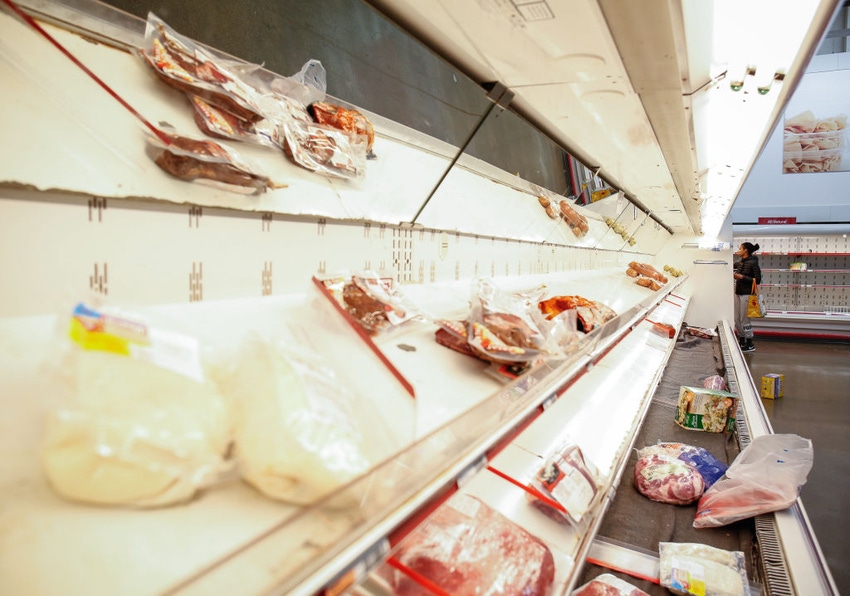Empty retail beef cases during the height of the pandemic created consumer angst about the food supply.

It is very likely that you are as tired of reading about COVID-19 and its effect on the beef business as we are of writing about it. But those of us who thought, last March, that this whole thing would be a two-week flash in the pan were wrong; the pandemic continues to affect every aspect of American life. I have yet to hear any speculation as to when that will end.
So, for the foreseeable future at least, the virus will continue to be the major factor in daily life, both yours and your consumer.
That’s the focus of research conducted by Menu Matters on behalf of the advertising and PR firm Charleston Orwig. Early on, when the coronavirus shut down restaurants, shoppers were driven to buying nearly all their food at grocery stores. The research found that was not without consumer angst as well.
READ: Beef a winner as consumers continue to stock up
Shopping fears
Nearly half of all consumers are concerned about the U.S. food supply chain, likely driven by broad shortages during the height of the crisis and media coverage on the possibility of meat shortages. Most concerned: Gen Xers, as well as consumers in New England and south-central regions of the U.S.
Though the media often focuses on safety concerns related to restaurant visits, nearly 75% of consumers are concerned about catching the coronavirus when grocery shopping—and the level of concern is consistent across all consumer groups surveyed. This likely explains why half use pickup or delivery at least some of the time. As might be expected, Millennials have embraced both of these trends more so than any other demographic while Boomers are least likely to have used either.
Widespread frustration
Just under two-thirds find grocery shopping frustrating to some degree, with women and older Millennials (especially those with multiple younger children) most likely to be very or extremely frustrated by the experience. Retailers have an opportunity to broaden communication and take even more proactive steps to communicate with shoppers.
Related: Ag must serve as a trusted resource during crisis
Out of stock = Brand erosion
Virtually all consumers faced out-of-stock situations, with many finding new brands, products or categories that they will continue to buy post-pandemic. Due to spot shortages or supply disruptions, many consumers are finding new brands, products or categories that they intend to continue buying post-pandemic.
Worker safety first
Most consumers are concerned about the health safety of food industry workers—from agriculture through retail. And just over 23% are extremely concerned. With nearly 60% of consumers very to extremely concerned about food worker safety, the industry needs to address these concerns to ensure customer confidence and consumer good will, particularly with the emerging awareness of social justice issues.
Related: Looking for good when COVID-19 is at its worst
Farmer trust: An encouraging sign
Trust in farmers remains high. More than half of consumer surveyed still trust farmers a great deal or completely—and overall trust in farmers is 87%.
That’s the good news from this research—consumers still trust you and your efforts to keep the food chain moving. I don’t often go to the grocery store, but during a recent visit to buy groceries for a fishing trip, I found the meat counter to be well-stocked. Barring any other unforeseen COVID-19 disruptions that would once again slow down or stop packers from operating, consumers should continue to have plenty of beef to choose from.
Consumer demand has been strong this summer. As summer winds down and fall approaches, consumer demand will continue to be the key to keep the beef chain moving fast enough to allow feedyards to become current in their marketings and willing buyers during the fall run.
So hang on. It’s gonna get better. It just may take longer than anybody wants.
About the Author(s)
You May Also Like



